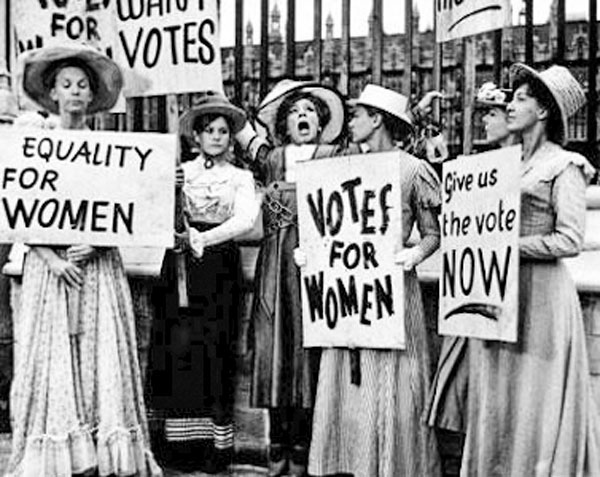A century of suffrage
By Lisa Nicklanovich; courtesy photo
Like many of us, community resident Karen Welden admitted that she has pretty much taken for granted women’s right to vote. “I had forgotten how tough the fight was to get me here but still, I take seriously my current ability to vote,” Welden said.
2020 marks the 100th anniversary of the ratification of the 19th Amendment of the U.S. Constitution, guaranteeing and protecting women’s constitutional right to vote. The right to vote is the heart of our democracy, yet it took a seven-decade campaign to get to this historic event. The road to get women the right to vote was tumultuous. There were disagreements, protests, alliances and arrests, which has led some to say women “fought” for the right versus it being “given.”
The campaign began in July of 1848 at the first women’s rights convention in Seneca Falls, New York. The U.S. women’s suffrage movement was launched there when Elizabeth Cady Stanton and Lucretia Mott led 300 women and men at the gathering. Seventy-two years later, in 1920, some 10 million women voted.
The movement split in 1869 over the 15th Amendment, which granted voting rights to African American men but not women. The National Suffrage Association lobbied for a federal amendment, while the American Woman Suffrage Association pursued a state-by-state strategy. Recognizing that a divided movement was hurting their success, the groups merged in 1890 as the National American Woman Suffrage Association (NAWSA).
It is worth noting that on November 7, 1893, Colorado was the second state to enact equal suffrage through popular vote; Wyoming being the first in 1890.
In 1913, Alice Paul organized NAWSA’s first women’s suffrage parade in Washington D.C., creating more awareness about the organization and its cause. In a speech titled “The Crisis” at NAWSA’s 1916 convention, President Carrie Chapman Catt outlined her plan to focus efforts on a federal amendment while encouraging women to work in their states for the level of suffrage that could be achieved.
The National Woman’s Party held protests outside the White House in 1917 to pressure President Woodrow Wilson to support women’s suffrage. For several months, suffragists protested in silence six days a week. Known as the Silent Sentinels in distinctive purple, white and gold sashes, the group was one of the first to picket outside the White House.
Thirty-three suffragists picketing outside the White House were arrested and jailed for “obstructing traffic.” Despite abusive and terrorizing treatment, Paul and other women undertook a hunger strike and were brutally force fed. They were released after the Washington D.C. Court of Appeals declared their arrests unconstitutional.
The term “suffrage” derives from the Latin word “suffragium,” meaning the right or privilege to vote. Even though the term has nothing to do with the word “suffer,” the centennial anniversary is a good time to acknowledge what some endured to get women the right to vote.
To learn more, watch both “Iron Jawed Angels,” a 2004 historical drama available on HBO and on DVD and “The Vote” on PBS’s American Experience. Visit www.2020centennial.org for the Women’s Vote Centennial Initiative, a collaboration of women-centered institutions, organizations, and scholars from across the U.S., who are working to ensure that this anniversary, and the 72-year fight to achieve it, are commemorated and celebrated throughout the U.S.
